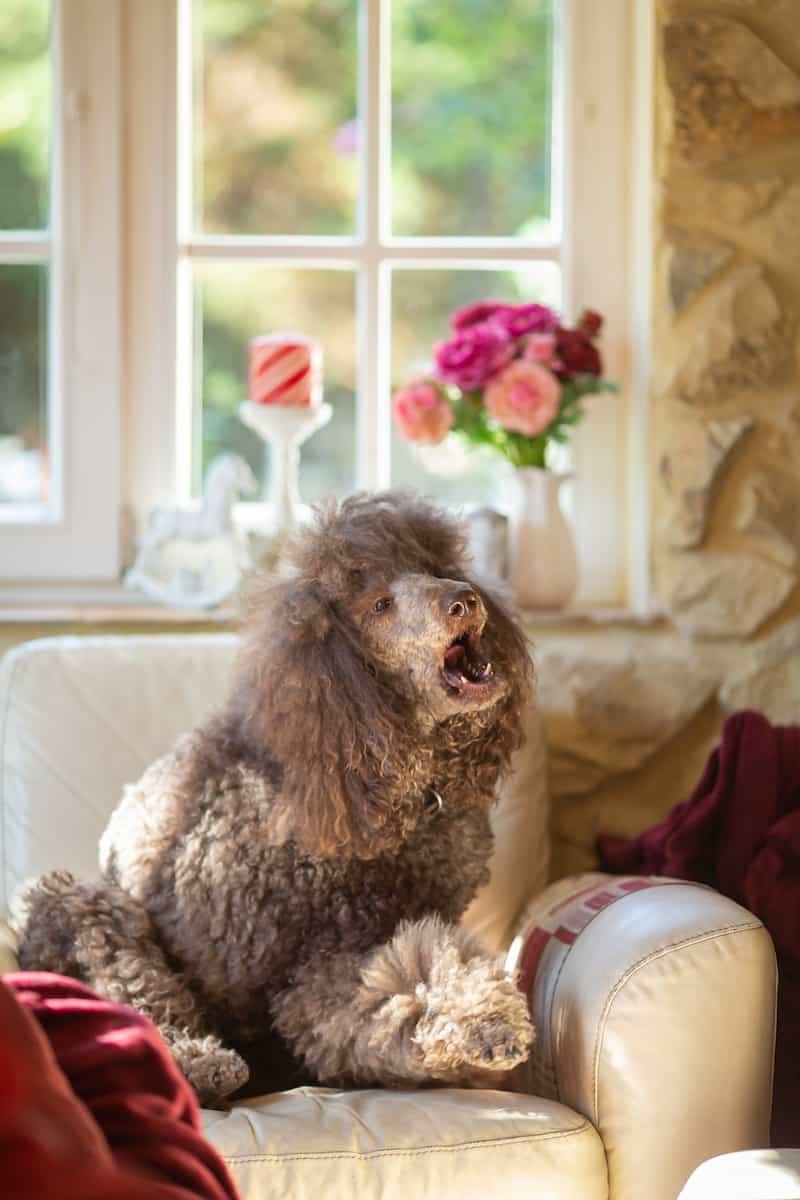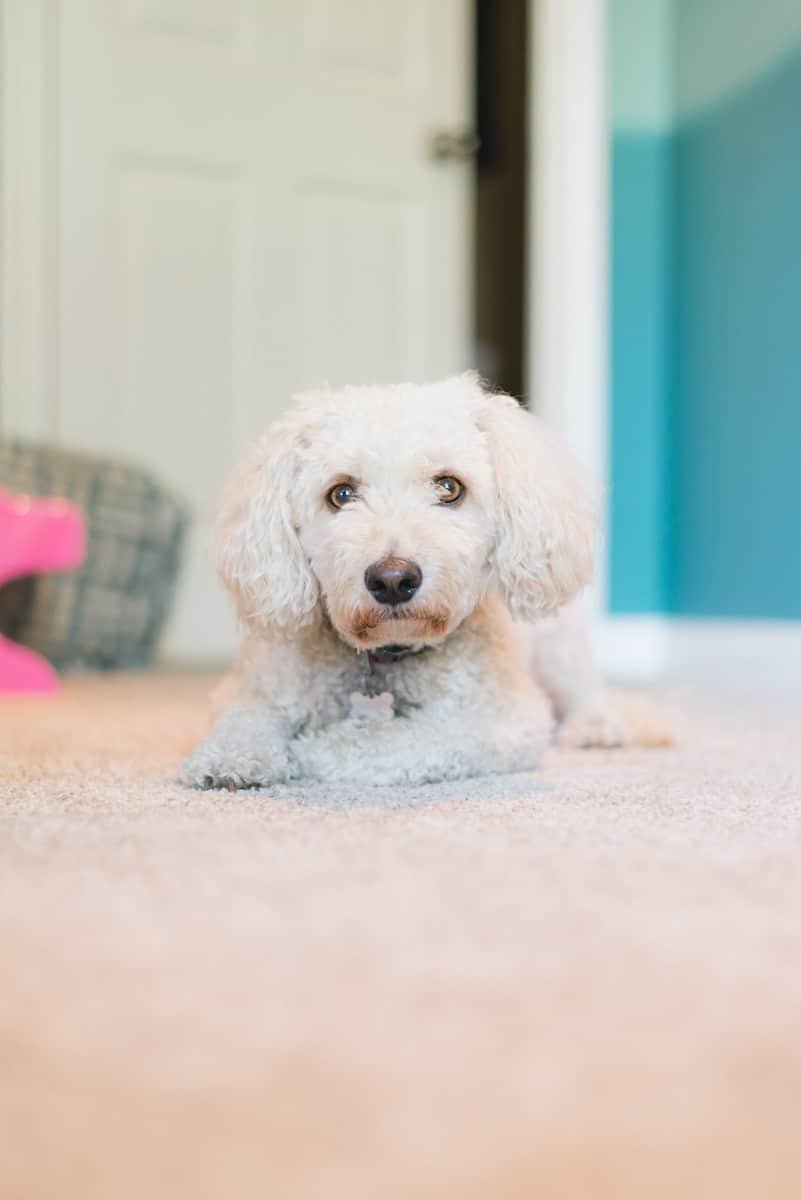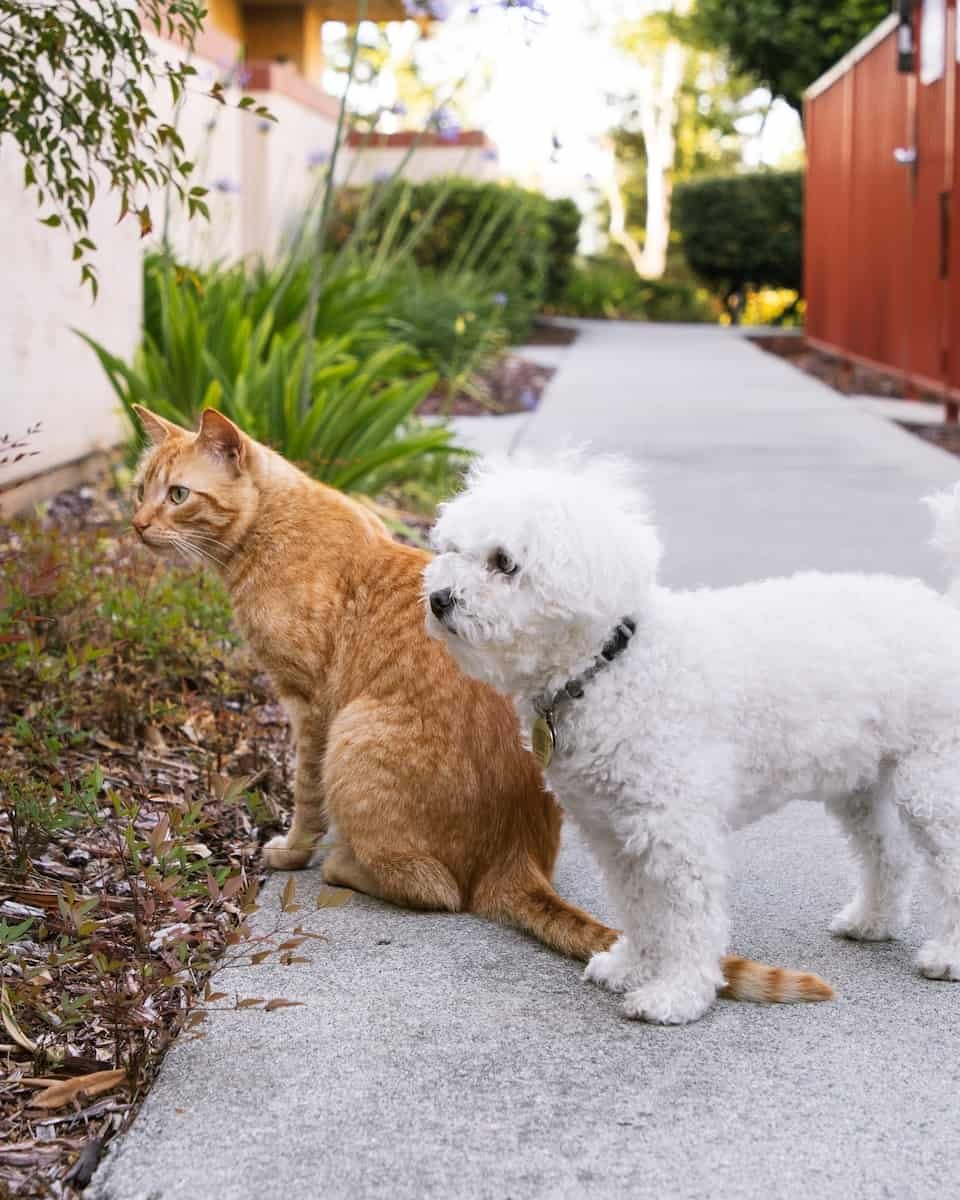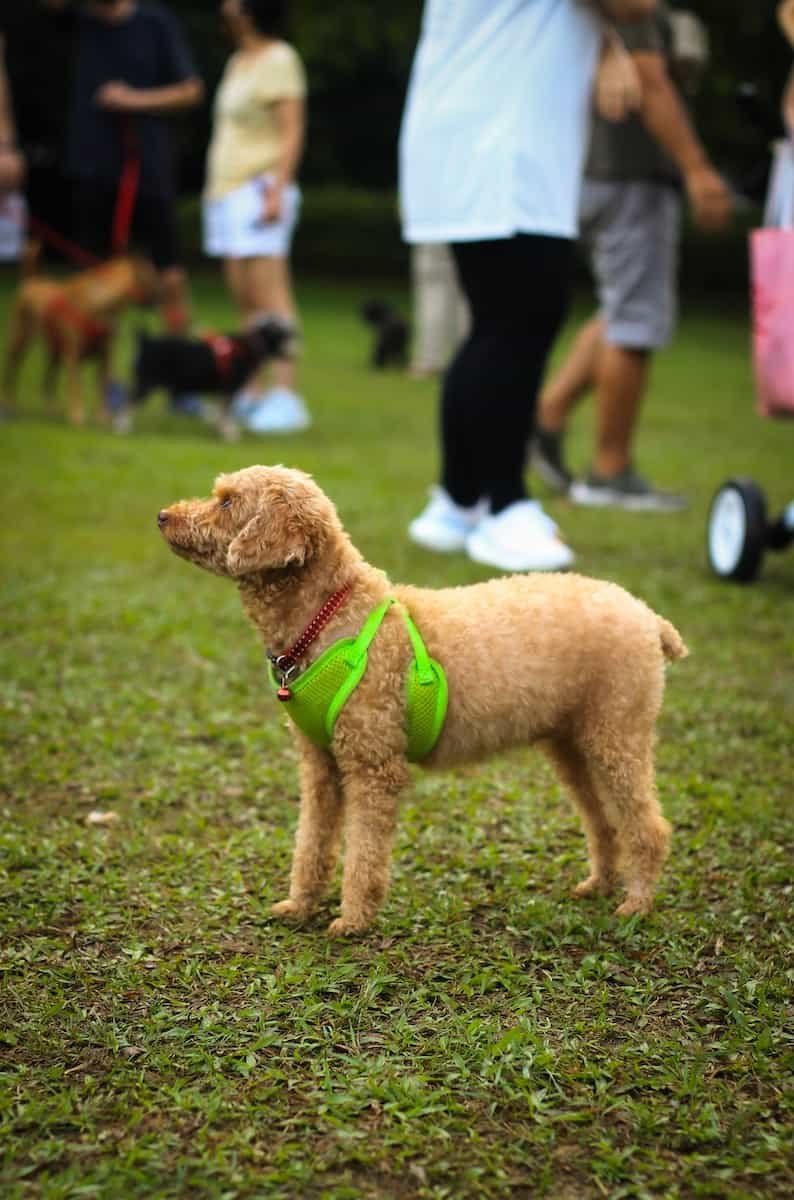
Introducing a timid poodle to new people and pets can be a challenge. With their reserved nature, it’s important to take care when introducing them to the unfamiliar. But with patience and understanding, you can help your pup become more confident in a variety of social situations. So if you’re wondering how to introduce a timid poodle progressively to new people and pets, read on!
About This Guide
- Real Experience: Written by poodle enthusiasts with years of hands-on experience caring for and training poodles.
- Expert Reviewed: Content verified by certified dog trainers and veterinary professionals.
- Fact-Checked: Information sourced from the AKC, veterinary journals, and breed specialists.
- Last Updated: November 2025
What Is a Timid Poodle?
Quick Start: Follow these steps for best results with your poodle.
A timid poodle is a breed of dog that is naturally reserved and shy around people and other animals. They may be slow to warm up to new people, environments, and situations, which can create challenges when introducing them to the unfamiliar. Signs of a timid poodle include low energy levels, avoiding eye contact, hiding away from strangers or pets, panting or shaking while around new people or animals, and cowering in fear when approached.
It’s important to understand that these behaviors are common for timid poodles and should not be punished as bad behavior. Instead, it’s important to take time and gradually introduce a timid poodle to new people and pets to help them become more comfortable with their surroundings.
Preparing for Introductions
Introductions are an important part of gradually introducing a timid poodle to new people and pets. Before the initial introduction, it’s important to make sure that both the new person or pet and the timid poodle are in a calm state of mind, as these can be stressful situations. It’s also important to ensure that the area is safe and secure for the poodle, with plenty of space for them to move around comfortably without feeling trapped or crowded.
Food bowls should be placed out of reach during introductions so as not to create any unwanted territorial behavior. Last, when preparing for introductions, it’s essential to keep a nylon leash on the poodle but at a loose enough length to still allow them freedom of movement. This will help avoid any tightness which could create tension in the body language between parties involved in the introduction.
Body Language
Body language is an essential part of introducing new people and pets to a timid poodle. It’s important to observe the body position of both parties involved in the introduction, as this will provide valuable insights into how the poodle is feeling about their new acquaintance.
If the poodle appears relaxed and open, with ears up and tail wagging, this is a sign that they are comfortable and confident with the person or pet. However, if their body language appears tight, rigid or fearful (such as tucked ears and tail between legs), then it’s best to take a step back and give them some space until they feel more at ease. Providing positive experiences throughout the introduction process can help create a rewarding experience for the poodle and encourage them to act confidently around those they don’t know.
Understanding Nonverbal Cues
Understanding nonverbal cues is an essential part of establishing a successful relationship with a timid poodle. Nonverbal communication can be used to assess how the poodle feels about their new environment and the people and pets around them. By recognizing subtleties in body language, such as ears up, tail wagging, or relaxed body position, you can gauge whether the pup feels comfortable or anxious.
Paying attention to these cues can help you determine when it’s time to step back and give them some space, or provide positive reinforcement for desirable behaviors. Becoming familiar with negative signals, like cowering or aggressive behavior, will enable you to recognize when your pup may feel threatened and take steps to prevent any unwanted behavior. Understanding nonverbal cues is an important part of fostering a safe and happy relationship between you and your pup.
Spotting Fearful Behavior in Dogs
Fearful behavior in dogs can be difficult to spot, even in stressful situations, but it is important to recognize the signs of fear in order to intervene before things escalate. Common signs of fear include cowering, tail tucking, excessive panting, and lip licking. These behaviors may be accompanied by trembling or aggression, depending on the situation.
Fearful behavior may also be expressed through hiding or avoidance, as well as attempts to flee the scene if given the opportunity. It is important to note that fearful behavior does not show a lack of socialization; even if your pup has had positive experiences with people and other animals in the past, they may still display fearful behavior when faced with an unfamiliar or threatening situation.
If you notice any signs of fear in your pup, it is best to remain calm and provide plenty of space and reassurance until they feel safe again. Making sure that your pup has positive experiences and providing them with plenty of one-on-one time are key components in helping them overcome their fears and develop confident behavior.
Creating a Positive Environment
Creating a positive environment is key to helping timid poodles feel safe and secure. Start by setting up baby gates or other barriers if needed to establish a safe space for your pup. Next, set up their food bowl in a quiet area away from people and other animals. This will help your pup associate their space with positive experiences.
To further reinforce desirable behaviors, provide a tasty treat, toy, and quality time with you whenever possible. Additionally, make sure that all interactions are conducted in a calm manner and that you reward your pup for good behavior with verbal praise and treats. Finally, keep the leash loose during walks to avoid triggering territorial behavior or unwanted behaviors such as pulling or lunging at people or other animals. With consistent effort over time, these steps will help create an environment where your pup can thrive and gain confidence around new people and pets.
Providing Adequate Space and Privacy
Providing adequate space and privacy for a timid poodle is essential to helping them feel safe and secure. Establishing barriers such as baby gates can help create a safe space for your pup and other animals in the household. It is important to keep the leash loose during walks to avoid triggering territorial behavior or unwanted behaviors, such as pulling or lunging at people or other animals.
Provide plenty of treats, toys, and quality time with you in the pup’s designated area. This will help your pup associate their space with positive experiences. Also, ensure that all interactions are conducted in a calm manner and that you reward your pup for good behavior with verbal praise and treats.
With consistent effort over time, these steps will help create an environment where your pup can gain confidence around new people and pets while also providing them with adequate space, tools and privacy to manage stressful situations.
Establishing Positive Associations with Food Bowls and Treats
Establishing positive associations with food bowls and treats is an important step in helping timid poodles feel comfortable around new people and pets. Start by introducing the pup to their food bowl and treats while they are still relatively young, ideally between two and four weeks of age.
Through consistent and positive interactions, you can help your pup associate their food bowl and treats with desirable behaviors, such as calmness and confidence. To do this, place the pup’s food bowl on the floor near where you will be standing or sitting. Give them verbal praise when they approach it or show signs of interest in it. If the pup is hesitant to eat from their bowl, slowly offer them a delicious treat from your hand while praising them for being calm. Over a short period of time, this process will help create a positive association between the pup’s food bowl and treats with confident behavior around people and other animals.
Keeping Calm Behavior During the Process
It is important to keep a calm demeanor while introducing the timid poodle to new people and pets. When introducing the pup to people, it is important to move slowly, make eye contact, and use a positive and happy voice. The pup should be allowed plenty of space to approach the person on their own terms rather than being forced into an uncomfortable situation. If the pup expresses any signs of fear such as cowering or hiding, these behaviors should not be punished or discouraged, as this can exacerbate their anxiety and make them even more fearful of meeting new people in the future.
When introducing the pup to other animals, it will depend on their individual temperament and that of the other animal. Sometimes, one-on-one time with each animal may be beneficial for both animals. This can help create a positive experience for both animals without overstimulating either of them. If possible, use a nylon leash and avoid using a tight leash, which could cause further stress for both parties involved. At all times during the introduction process, it is important to reward desired behaviors with treats and verbal praise in order to create a rewarding experience for both animals involved.
Introducing to New People and Pets
When introducing a timid poodle to new people and pets, it is important to move slowly and make sure that the pup’s needs are met in order to create the most positive experience possible. Start off by keeping a calm demeanor, making eye contact with the person or animal, and using a positive tone of voice while introducing them.
Allow plenty of space for the pup to approach on their own terms, and reward desired behaviors such as friendly body language with treats or verbal praise. If the pup expresses any signs of fear, it’s best to leave them be rather than punish them. When introducing the pup to other animals, give each one one-on-one time to help create a positive experience for both animals without overstimulating either of them.
Finally, use a nylon leash rather than a tight leash when out in public with your pup, which can help prevent any territorial behavior from developing. With patience and consistency, gradually introducing timid poodle to new people and pets will soon become a rewarding experience for both you and your pet!
Initial Introduction Process – Weeks of Age Dependent
When introducing a timid poodle pup to new people and pets, the initial introduction process should be based on their age. If a pup is younger than 12 weeks of age, it is important to keep their exposure to unfamiliar environments limited in order to prevent any bad behaviors from forming. During this period, it is essential to provide them with plenty of quality time, positive interactions and quiet times when they can relax in a safe environment. Puppy-proofing your house can help make sure that your pup stays safe during this period of change.
When puppies are older than 12 weeks of age, the introduction process may involve slowly exposing them to other people and animals while using positive association techniques, such as treats or verbal praise, to reward desired behaviors. Also, having a food bowl nearby or using baby gates at first can help create a more comfortable environment for your pup when interacting with strangers or other animals. Finally, throughout the entire introduction process, it is important to monitor your pup’s body position and behavior in order to identify any signs of fear or anxiousness and take steps accordingly in order to ensure that all parties involved have a positive experience.
Allowing Unwanted Behaviors to Pass Without Interference or Punishment
Unwanted behaviors are a common issue when introducing a timid poodle pup to new people and pets. To help prevent these behaviors from forming, it is important to allow them to pass without interference or punishment.
Punishment can cause fear and anxiety in the pup, making it less likely that they will learn desirable behaviors. Instead of punishing unwanted behavior, try redirecting the pup’s attention to something more appropriate using verbal cues, treats, or toys. This can help your pup learn that desirable behaviors are rewarded and undesirable ones are ignored.
Providing plenty of space for your pup during introductions can help keep them from becoming too territorial or aggressive towards others. Finally, don’t forget to reward positive behavior with praise and treats as this can help create a positive association between your pup and their environment.
Encouraging Confident Behavior Through Positive Experiences and Rewards
Positive experiences and rewards can be powerful tools in helping a timid poodle pup build confidence. Giving treats during meetings can help your pup overcome fear of new situations. Allowing your pup plenty of one-on-one time with you and others can provide them with the quality time needed to build their trust in those around them.
Finally, rewarding confident behavior with treats, praise, or even gentle petting can reinforce these good behaviors, making it more likely for them to occur again in the future. Through these positive experiences and rewards, your pup can develop a healthy level of self-confidence that will serve them well throughout their life.
Territorial Behavior Prevention Strategies
Preventing territorial behavior is an important part of introducing your timid poodle to new people and pets. Territorial behavior can manifest in a variety of ways, such as growling, snarling, barking, or lunging at other animals and people. In order to prevent this type of unwanted behavior, it is important to introduce your pup gradually and provide plenty of space for them to feel safe.
It is also important to be aware of their body position when introducing them to new things; if they are crouching low or turning away from the situation, it is best to give them some distance and try again another day. It can help to bring along treats or toys that your pup can associate with positive experiences during introductions.
Using a nylon leash instead of a collar or harness gives your pup more freedom to move while staying secure in new places. Follow these steps to create a safe environment for your pup to learn how to interact with new people and animals.
Using Baby Gates as Physical Barriers
Baby gates are an effective way to help control your pet’s environment when introducing them to new people and pets. Using baby gates can create a barrier for your pup, making them feel more at ease in their own space while still being able to observe the introduction.
When using baby gates, make sure they are tall enough and securely fastened to prevent your dog from jumping over or knocking them down. If you have multiple dogs, it is important to consider how they might interact with each other through the gate; if any aggressive behavior arises, separate them immediately in order to avoid any unwanted fights.
Baby gates allow puppies to safely observe their surroundings until they feel comfortable approaching. Introduce your pup slowly to new people and animals to make sure they have a positive experience.
Establishing One-on-One Time With New Individuals/Pets
Establishing one-on-one time with new individuals or pets is an important part of introducing a timid pup to unfamiliar people and animals. This can be done by taking your pup on walks, either alone or in the person’s company or pet they will be meeting. Creating this as a daily routine would be a smart approach.
During these outings, it is important to make sure that your pup is comfortable and not feeling overwhelmed. Keep your pup’s body language in mind; if they are displaying signs of fear, it may be best to keep them at a greater distance until they become more accustomed to their surroundings. If possible, try to find a quiet location where there won’t be too many distractions for your pup.
Use a nylon leash rather than a tight one when walking; this provides more freedom of movement while still giving you control over their movements. Spending quality time with each person or pet can help your dog feel more confident.
Spending Quality Time With the Poodle in Quieter Times
Spending quality time with your poodle in quieter times is an essential part of introducing them to new individuals and pets. It’s important to have positive interactions to help your puppy feel comfortable. This can be done by providing treats, petting and playing with them in a calm, gentle manner.
Try to limit the amount of stimulation given to your pup; too much stimulation can cause them to become overwhelmed and fearful. It is important to monitor their body language for signs of distress.
If your pup appears uncomfortable or anxious, try giving them some space and allow them to explore their environment at their own pace. Spending quality time with your dog during calm moments can make future introductions easier and less stressful.
Leash Considerations
Leash considerations are essential for introducing a timid poodle to new people and pets. To have a positive introduction, use a long nylon leash for your pup. The leash should also be loose enough so that your pup has some freedom of movement but is tight enough to maintain control if they show signs of fear or aggression. It is important to avoid pulling on the leash too tightly, as this can cause discomfort and lead to inappropriate behaviors.
When handling the leash, keep your body position neutral and relaxed; this will help create a more confident atmosphere and encourage desirable behaviors in your pup. With these considerations in mind, you can ensure that introducing your poodle to new people and pets is an enjoyable and rewarding experience for both you and your pup.
Using a Nylon Leash Rather Than a Tight Leash Using the Leash Sparingly During Introductions
When introducing a timid poodle to new people and pets, it is important to use a nylon leash that is long enough to give your pup plenty of space. It should also be loose enough so that your pup has some freedom of movement but is tight enough to maintain control if they show signs of fear or aggression.
Avoid pulling too tightly on the leash, as this can cause discomfort and lead to unwanted behaviors. Instead, use a light hold on the leash and keep your body position neutral and relaxed in order to create a more confident atmosphere.
It is wise to use the leash loosely during introductions and only pull it tight when necessary for safety. By utilizing a nylon leash rather than a tight leash during introductions, you can ensure that the experience is enjoyable for both you and your pup.
Conclusion
Introducing timid poodles to new people can be challenging, but it can also reward with patience and guidance. Use a nylon leash and positive interactions to introduce your pup to new people and pets safely.
It is important to note that the introduction process may take weeks or even months depending on the age and history of your pup. By being consistent and using positive reinforcement, you can teach your puppy good behaviors and prevent fear or aggression. To introduce a shy poodle to new people and pets, take it slow and give them time to gain confidence in their surroundings.






